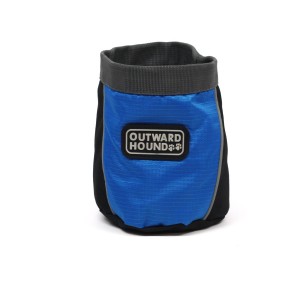Prepare Your Clients As Much As You Prepare Their Dogs
When you’re starting out as a professional dog trainer, you probably come to lessons prepared with extra treats, a treat pouch, and a clicker. You might even bring a variety of toys in the trunk of your car. This is a wonderful way of being prepared to train your client’s dog, but you can miss out on excellent learning opportunities for the client if they know you always bring the goods anyways.
Create Expectations
 Ensuring that you have the proper tools for training is important to accomplish the training goals you set out to achieve, but we’d like to advise that you let that preparation fall in your clients hands. Encouraging your clients to provide all the necessary equipment helps them in these ways:
Ensuring that you have the proper tools for training is important to accomplish the training goals you set out to achieve, but we’d like to advise that you let that preparation fall in your clients hands. Encouraging your clients to provide all the necessary equipment helps them in these ways:
- It teaches them to think about their dog’s perspective. Reinforcers should be items their dog wants to work for. Ultimately, your clients need to be able to figure this out on their own.
- It teaches them how to be prepared for anything. Having them be responsible for supplying a variety of reinforcers and management tools helps them learn about when and how to use the tools you ask them to provide.
Dog Training Supplies Your Clients Should Supply
Treat Pouch
We’ve taught classes and lessons with and without recommending a treat pouch. We’ve found that, by far, clients who use pouches are less likely to bribe their dogs than those that don’t wear them. Clients that don’t wear treat pouches are more likely to hold a baggy of treats in their hands while training which is essentially bribery. Pouches help keep the food out of the clients hands as they learn how to juggle the leash, clicker, and reinforcers.
Clicker
Not all positive trainers use clickers, but more and more trainers are incorporating them into their training. Having a dog (and owner) that is “clicker savvy” can help address behavior issues down the road. We recommend teaching owners and their dogs at least one behavior with the clicker so that both are familiar with the concept and implementation of it. Check out our favorite explanation of what clicker training is so you’re sure you know how to explain it before you work with your next client!
Low and High Value Treats
One of the most important lessons you can teach a client is how and when to use each treat. Therefore, asking them to bring multiple types of treats to class or to a lesson is a great way to show them when each one will work and why it matters.
6 Foot Leash & Harness
Clients can now purchase a variety of tools to attach to their dogs. You must be extremely specific when recommending a leash and harness. Leashes come in a variety of lengths and structures. If you just say “a leash and collar” you can end up with endless combinations including a flexi-leash with a prong or choke chain! Your directions should get as specific as “Please bring a 6 foot, non-retractable, nylon or leather leash and a front attach Easy-Walk harness.” Anything less and you could end up with a harness that tightens around the dog’s body when it pulls or a double attachment retractable leash!
Relaxation Mat
While you’re speaking and giving instructions in class, the dogs usually get ignored as their humans (hopefully) listen. Providing them a mat to lie on while waiting for the next exercise communicates to them to be patient and gives them concrete information about what they should be doing. It is fairly easy for owners to reinforce their dogs while they continue listening to you speak. This relaxation exercise will help dogs learn how to just “hang out” while their owners pay attention to something else.
Ultimately, placing more responsibility on the client will teach them more important lessons than always bringing the necessities for them. They will be continuing on the training in the future without you so they need to learn those skills sooner rather than later. Share your thoughts about this idea in the comments below!
Recommended Articles:



